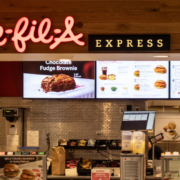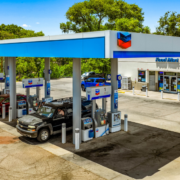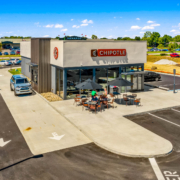Why Franchise Restaurant Real Estate is a Resilient Investment in 2025
Franchise restaurant properties remain a smart bet—here’s why they belong in your portfolio.
With elevated interest rates, tighter capital markets, and shifting consumer spending, investors are seeking stable, income-generating assets. Franchise restaurant real estate remains one of the strongest retail sectors, offering long-term leases, prime locations, and brand-backed tenants.
Franchise Restaurants vs. Independent Operators: Why Brand-Backed Tenants Matter
Investing in real estate comes with inherent risk, but franchise-backed properties offer a level of stability that independent operators must build over time.
- Established brand recognition drives repeat business, making these properties more resilient than standalone non-branded restaurants reliant on personal reputation. Independent operators are fully responsible for their success or failure and often have to rely on higher marketing and operational costs to stay profitable.
- Franchisees benefit from national supply chains and operational support, marketing, as well as extensive R&D investments, which give them greater financial durability in uncertain markets. Independent operators need to negotiate their own supplier contracts and logistics which has an impact on their profit margins.
For investors, franchise-backed restaurant real estate delivers strong tenant security, reliable cash flow, and long-term appreciation potential.
Macroeconomic Factors Strengthening Franchise Restaurant Real Estate
1. Stability in High-Rate, High-Inflation Markets
After a period of aggressive rate hikes, interest rates remain elevated, making stable, cash-flow-positive assets even more valuable.
- Franchise restaurant properties often operate under longer-term leases, providing a more predictable income stream. Additionally, franchisees have the flexibility to structure leases with annual rent escalations, helping landlords hedge against inflation and maintain steady revenue growth over time.
- Many top brands have strong pricing power derived from their loyal customer bases and strong brand recognition. This allows them to pass on any rising costs to the consumer without seeing a fall in foot traffic.
- One of the most popular lease types with franchise restaurants, triple net leases, transfer the operating costs to the tenant, protecting investors from any rising expenses.
- Fast food demand remains strong even during unstable financial times, with many consumers favoring more affordable options.
2. Sale-Leaseback Transactions Are Increasing, Providing Strong Investment Opportunities
Higher interest rates have increased the cost of debt for operators, leading many franchisees to look at alternative sources of capital through sale-leaseback transactions. Investors can capitalize on this opportunity and benefit from:
- Higher cap rates, driven by the flexibility of franchisees who understand their rent affordability, make this a standout option compared to other asset types like office or multifamily, which have been impacted by rising interest rates and have less flexibility.
- Portfolio diversification with brands that have a proven track record. With multiple locations, multi-unit franchise operators have access to higher institutional knowledge, helping them navigate challenges.
- Tenants with strong credit profiles and built-in rent escalations.
3. Prime Locations Drive Property Value and Long-Term Demand
Despite the dominance of online ordering and delivery services, physical restaurant locations remain a cornerstone of the franchise model. Rather than replacing brick-and-mortar spaces, digital demand is reshaping them, driving the need for prime locations with large kitchens, dedicated pickup areas, and expanded drive-thru lanes to accommodate both in-person and online customers.
When evaluating restaurant real estate, it’s essential to consider these evolving needs, ensuring spaces are optimized for both traditional dining and the growing digital market.
The Future of Franchise Restaurant Real Estate in 2025 and Beyond
The restaurant industry is evolving, but franchise-backed QSRs continue to drive real estate demand. The sector is being reshaped by shifting consumer behaviors, evolving restaurant formats, and financial market conditions, creating new opportunities for investors who stay ahead of the curve.

















